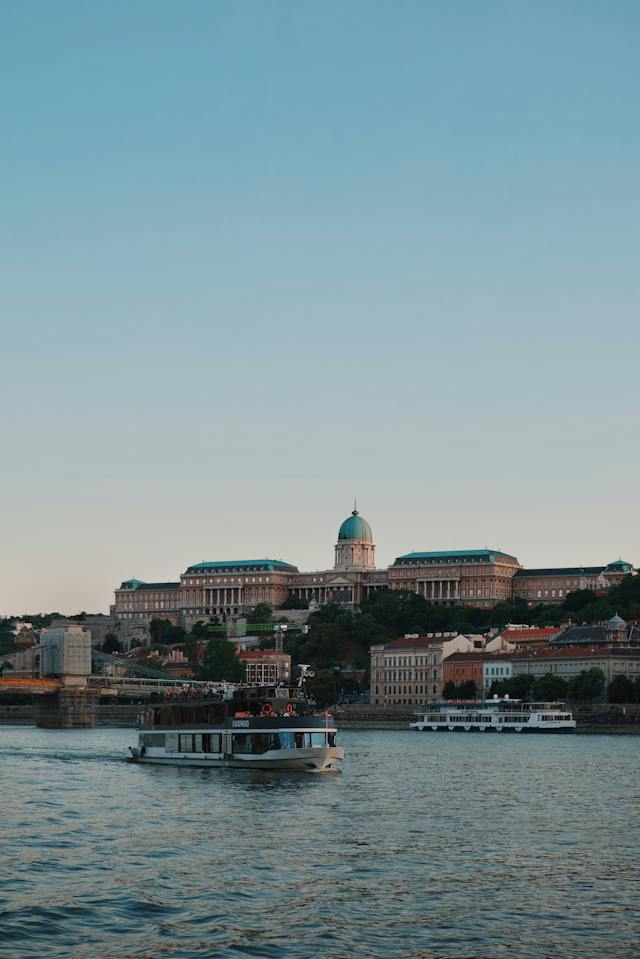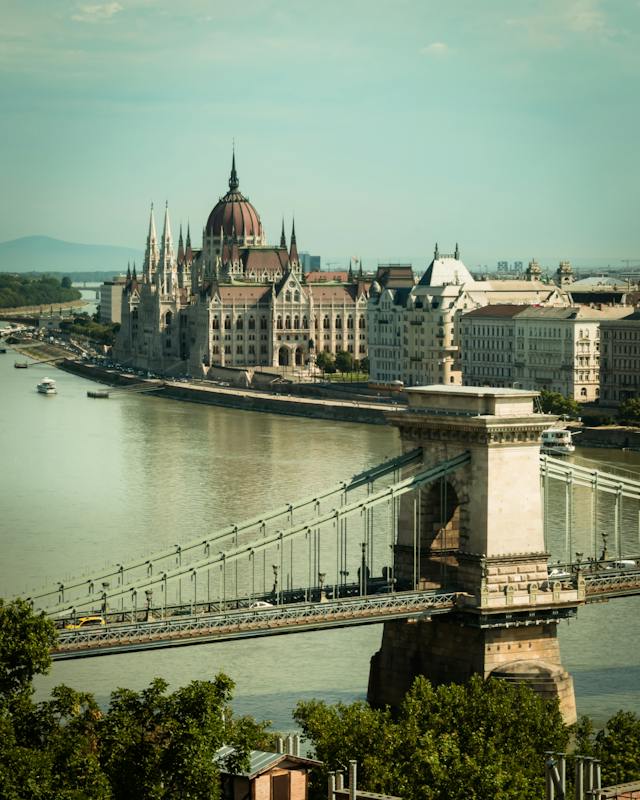The fact that Budapest – one of the most beautiful cities in the world – has developed exactly where it is, is not down to some historical accident. Take a look at Gellért Hill, right next to the river Danube as it flows majestically through the centre of the modern city. It was precisely the combination of the relative ease of crossing the River here and the natural protection the hill offered against invasions that told the earliest settlers it was the ideal place for building a town. The Eravisci, a tribe of highly cultured Celts, settled around the elevation known today as Gellért Hill as early as the third and fourth centuries BC. They worked with iron, used decorated earthenware pots and even minted their own coins. Later, the Romans built a settlement at today’s Óbuda. They called it Aquincum and it was an important station along the limes which ran alongside the River Danube.

The advantages of settling here were equally obvious at the time of the Magyar Conquest. The new settlers built a centre on both sides of the River. Interestingly, both parts came collectively to be known as Pest. Some researchers say that the word is of Slavic origin, meaning stove or kiln, and refers to the natural warm springs found on and near Gellért Hill. The Royal Charter dating from 1232 appears to support this hypothesis. The name Buda came somewhat later, during the reign of King Béla IV. When Hungary was invaded and devastated by the Mongols (1241-1242), King Béla ordered new castles and fortresses to be built all around the country. He provided a good example, for he built the first Royal Palace in Buda on what from that time on become known as Castle Hill. It was also he who, in a gold-sealed letter of 1244, conferred privileges on the towns that enabled them to develop agriculture and trade. Buda became the royal seat around the turn of the fifteenth century under the rule of Sigismund of Luxembourg, and the Royal Palace grew ever larger until its zenith was reached under King Matthias (ruled 1458-1490). Pest also prospered at this time, and Matthias raised it to equal rank with Buda. In between the two, contemporary records show that Margaret Island was home not only to several monasteries but also to a castle built by the crusaders. Following the dire Hungarian defeat at the Battle of Mohács (1526) the Turks looted and burned Buda. Pest and Óbuda, too, suffered dreadfully as a result of the century-and-a-half of Turkish rule that followed. The Turks did, however, build baths and spas using the hot springs in the area. Their cupolas appear on contemporary engravings, and of course some of them still exist and function today – the most visible legacy of the Turkish period.
Buda was freed from Turkish rule on 2 September, 1686, and so began the next period of development. Many places outside the capital were granted the right to hold markets, and there were social developments as well. A printing press was established in Buda by 1724, and in 1777 Empress Maria Theresa had the country’s only university of sciences moved here from Nagyszombat (today Trnava, Slovakia), bringing with it an influx of learned professors and youthful students. Emperor Joseph II later transferred it from Buda to Pest, a move which promoted the development of Hungarian-language literature and in due course theatre, because up till that time the dominant language of culture in Buda had been German. The Hungarian Academy of Sciences, the Kisfaludy Társaság, and the National Theatre together played a pivotal role in the social development of the city. This was also the age when newspapers were founded, among them the ground-breaking Pesti Hírlap established by Lajos Kossuth.
The next challenge was the building of the first permanent bridge over the river Danube – the Chain Bridge, today still the most emblematic bridge of the city – and the logical conclusion of that was the legislative unification in 1873 of Buda, Pest and Óbuda into one city – Budapest. A Council of Public Works was formed, whose decisions determined both the future shape and the enduring beauty of the city. The great boulevards and avenues were laid down – most notably Andrássy út and the system of ’körutak’ or ring roads – and the transformation of Budapest into a modern world class city truly began. There was an even greater impetus at the end of the nineteenth century as Hungary celebrated the millenary anniversary of the Magyar Conquest. The first continental Underground railway was built, the streets were paved, street lighting was introduced, the waterworks at Káposztásmegyer was constructed (and is still in operation today), and a public sewage system was developed. The first trams appeared.


The political Compromise between Hungary and Austria in 1867 led to the beginning of the industrialization of Budapest. Agricultural industries, milling and food industries all moved into the capital, and engineering industries grew. Railways were built, and, as with the major roads, they all radiate out from Budapest. Budapest itself did not suffer particularly in the First World War, so after a brief halt, the process of development resumed. As the city continued to grow, neighbouring suburbs were absorbed into four new administrative districts. The Second World War, however, had a catastrophic effect. Apart from the horrifying cost in terms of human lives, the architectural splendour of the city was brought to ruin. Every one of the bridges over the River Danube, for example, was blown up by the retreating Germans. These the authorities managed to replace within four years, as work to rebuild the city progressed apace. There was a further administrative enlargement in 1950, when more neighbouring towns were absorbed; the city now comprised 22 districts (more recently this has become 23, as boundaries have been redrawn). The city’s buildings and transport network suffered afresh in the 1956 Uprising, but were again repaired. Large-scale building of apartment blocks took place in the 1960’s, followed by the construction of two new Underground lines. The Lágymányosi Bridge, the new National Theatre and the National Concert Hall have all appeared since the fall of Communism. There are many further developments envisioned for the near future, including a fourth Underground line.
The political Compromise between Hungary and Austria in 1867 led to the beginning of the industrialization of Budapest. Agricultural industries, milling and food industries all moved into the capital, and engineering industries grew. Railways were built, and, as with the major roads, they all radiate out from Budapest. Budapest itself did not suffer particularly in the First World War, so after a brief halt, the process of development resumed. As the city continued to grow, neighbouring suburbs were absorbed into four new administrative districts. The Second World War, however, had a catastrophic effect. Apart from the horrifying cost in terms of human lives, the architectural splendour of the city was brought to ruin. Every one of the bridges over the River Danube, for example, was blown up by the retreating Germans. These the authorities managed to replace within four years, as work to rebuild the city progressed apace. There was a further administrative enlargement in 1950, when more neighbouring towns were absorbed; the city now comprised 22 districts (more recently this has become 23, as boundaries have been redrawn). The city’s buildings and transport network suffered afresh in the 1956 Uprising, but were again repaired. Large-scale building of apartment blocks took place in the 1960’s, followed by the construction of two new Underground lines. The Lágymányosi Bridge, the new National Theatre and the National Concert Hall have all appeared since the fall of Communism. There are many further developments envisioned for the near future, including a fourth Underground line.